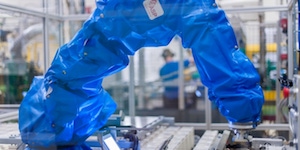Five medical injection molding trends from across the pond
October 14, 2016

I came across an interesting blog post on the Elos Medtech website the other day that highlights five injection molding trends in the medical technology industry. Headquartered in Skara, Sweden, with facilities in Denmark, China and the United States (Memphis, TN), Elos Medtech offers contract manufacturing services to a global customer base, specializing in dental implants, diagnostics, trauma and spine applications, drug-delivery systems and hearing aids. While author Leif Manitski comes at this from a European perspective, many of his observations echo what I’ve heard from U.S. manufacturers.
|
Image courtesy Elos Medtech. |
For starters, Manitski points to a reshoring trend driven by quality concerns. Despite high labor costs in Sweden and Denmark—well above those in the United States—“we are now starting to see companies return production to Europe” from China because the quality is inadequate, he writes. “Chinese medtech companies purchase molding tools as well as injection-molded plastic products from Europe because of the poor quality in their domestic market,” writes Manitski.
Because of the cost of labor, automation has become extremely popular in medical manufacturing, another trend that Manitski highlights. However, cost is not the only factor that is leading companies to invest in automation. “There is an ongoing trend to increase production efficiency with the benefits of reduced human labor costs, saved energy and materials—but, more importantly—improved quality, accuracy and precision,” writes Manitski.
Elos Medtech has fully embraced automation at its facilities. Speaking to Modern Materials Handling, the company’s head of R&D, Henrik Andersen, commented: “Whenever we invest in new equipment, it is now a requirement that it is a more automated solution than the one we already have. The objective is to reduce the amount of repetitive work and to strengthen the quality assurance of our products.” And that line of reasoning has not had a negative effect on employment, as some might presume. On the contrary, staffing has increased from 116 to 145 employees over the last two years.
Among the other trends, Manitski points to increasing demand for traceability up and down the supply chain and single-source solutions that extend from injection molding to testing, assembly, packaging and labeling. “Companies want to outsource not only the manufacturing, but the entire production process to one single contract manufacturer,” notes Manitski.
You can read his full article here.
About the Author(s)
You May Also Like





